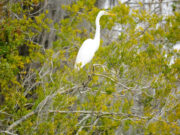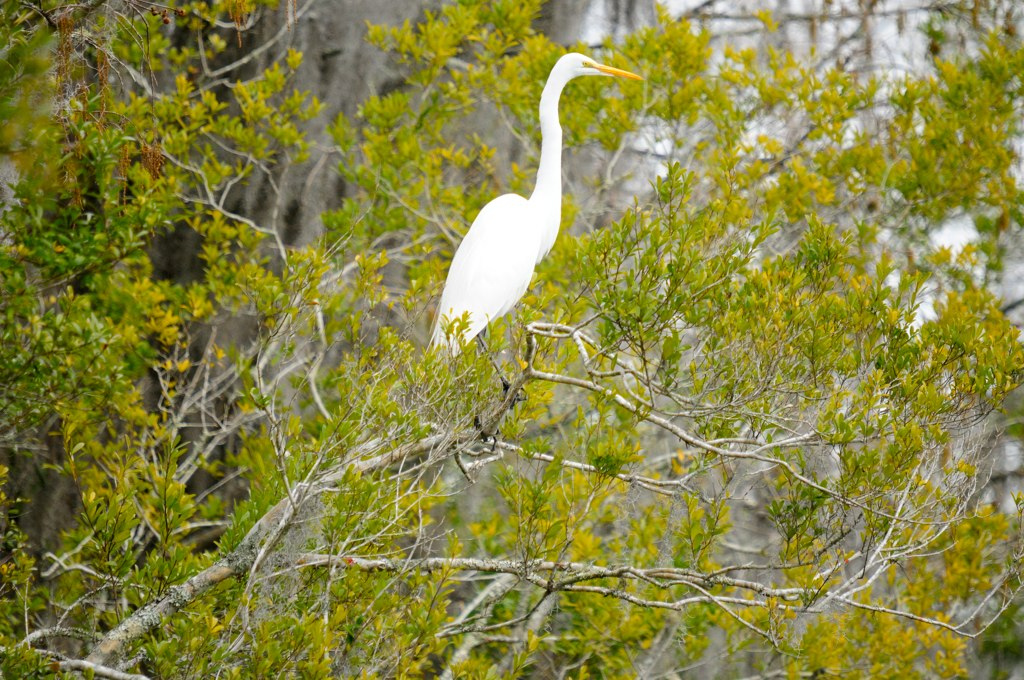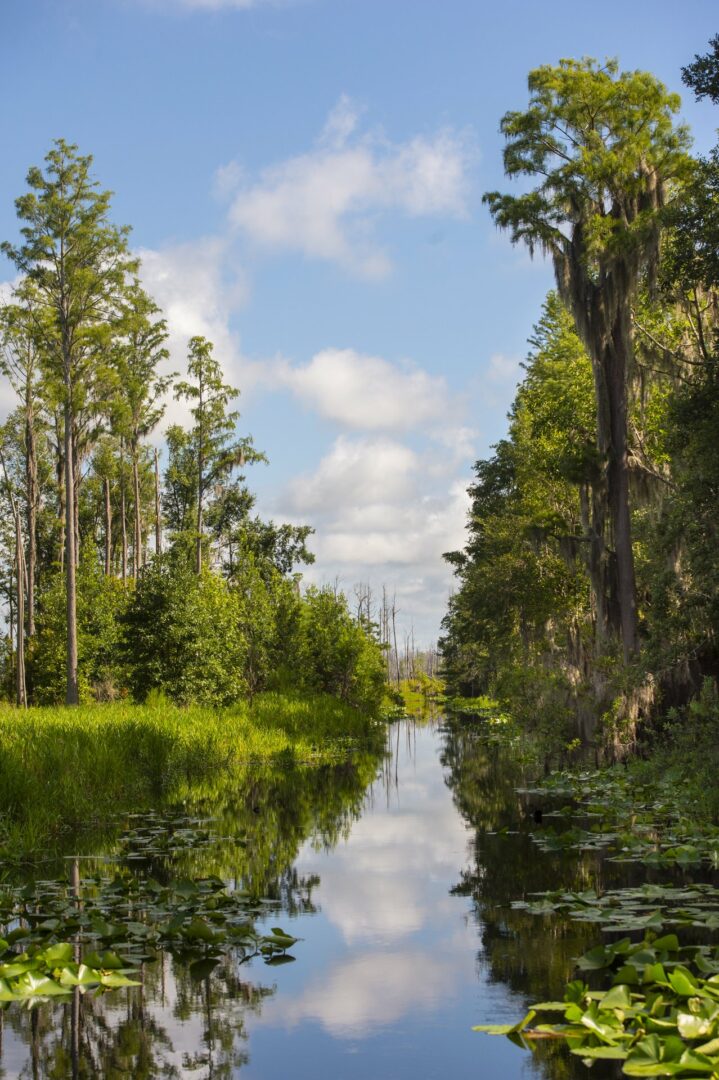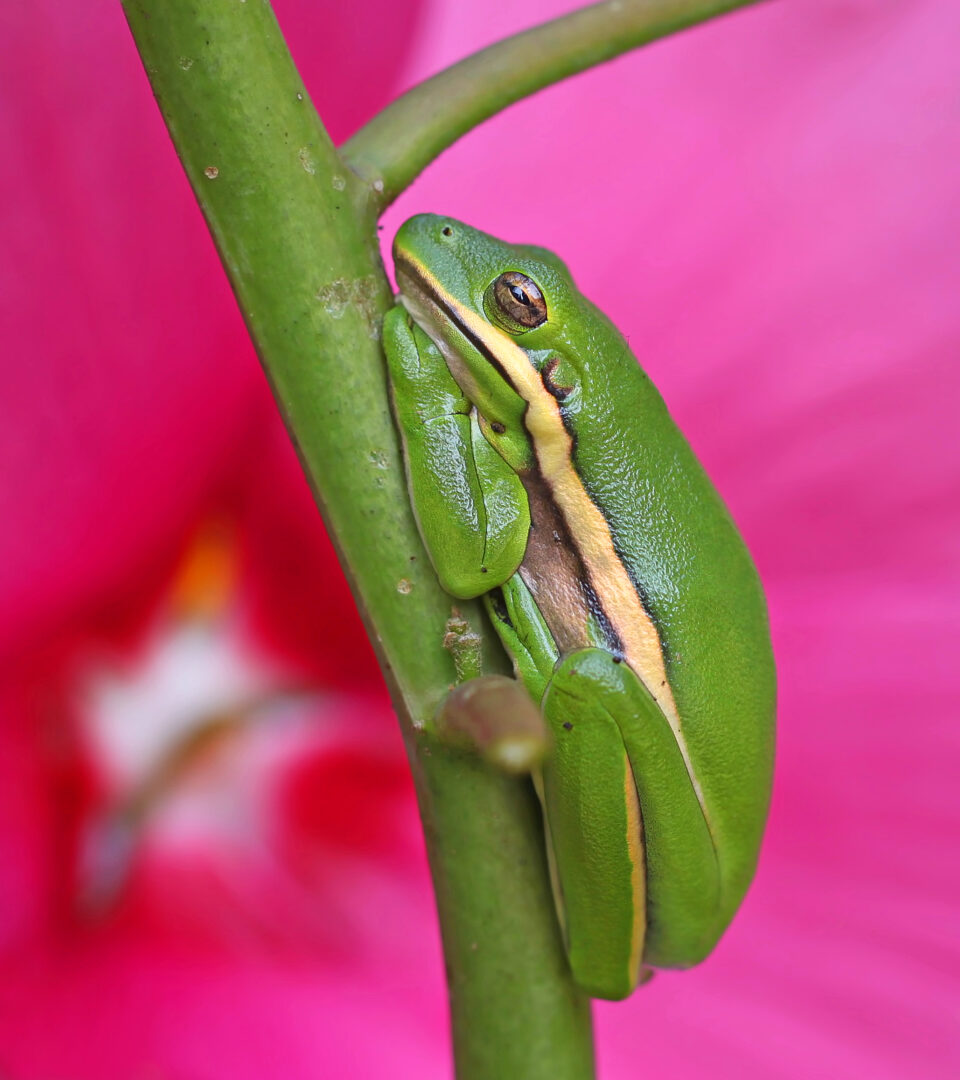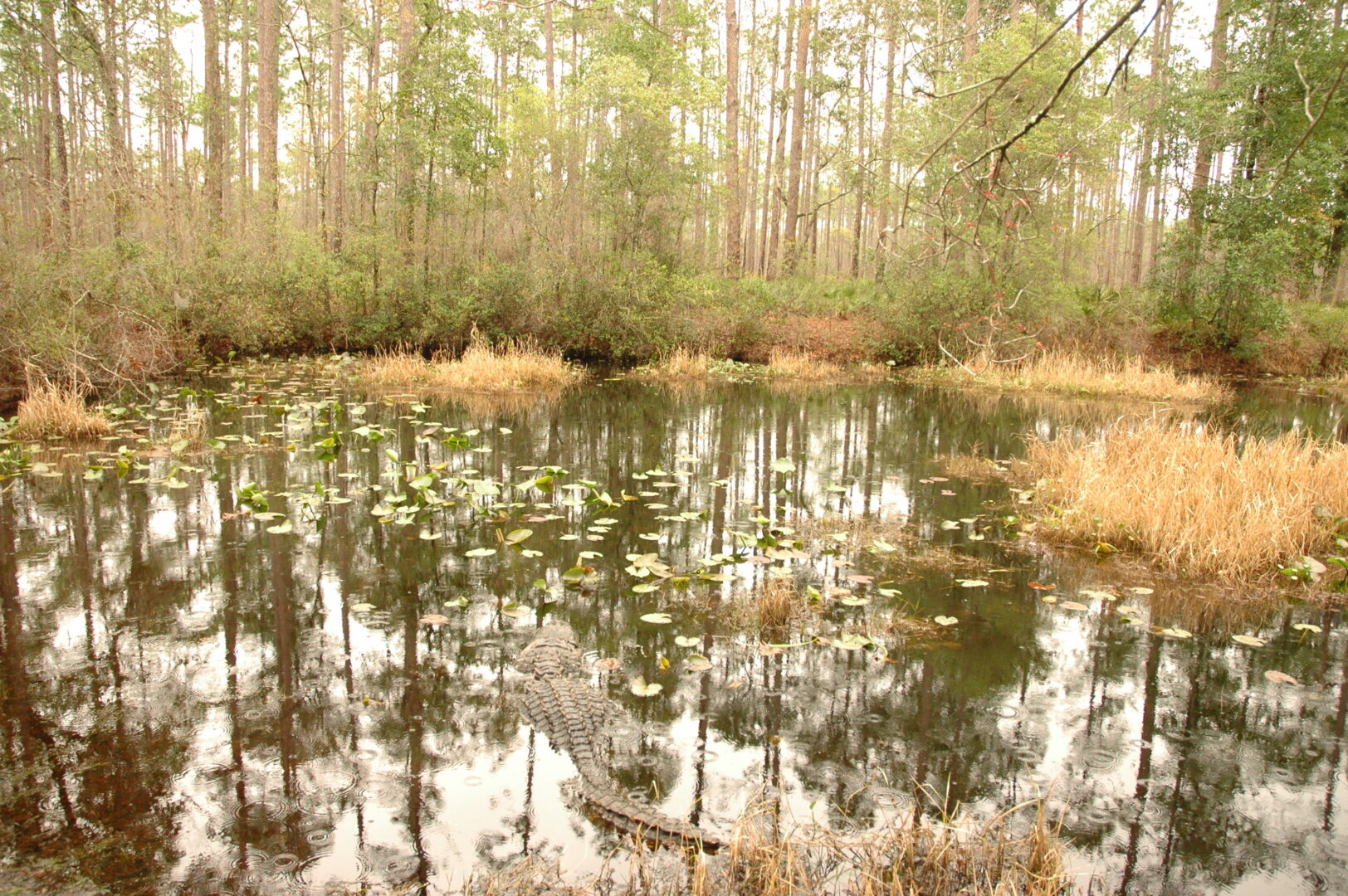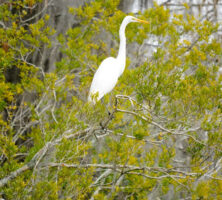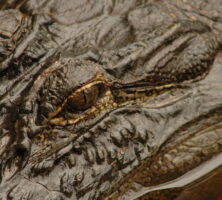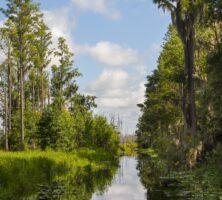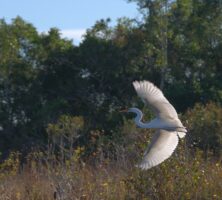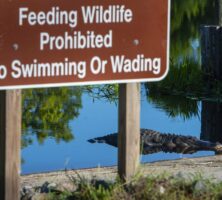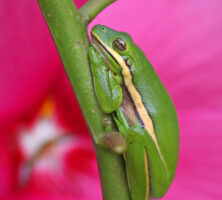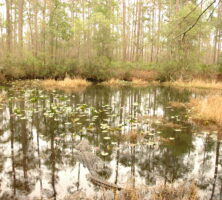The largest swamp in North America, the Okefenokee Swamp covers roughly 700 square miles and is located in the southeastern corner of Georgia, encompassing most of Charlton and Ware counties and parts of Brantley and Clinch counties. The swamp has a distinctive and fascinating natural history. Cypress swamps, winding waterways, and floating peat mats are a major part of the Okefenokee’s habitat mosaic. Wet and dry prairies, swamps dominated by shrubs, and forests of black gum and bay trees intersperse the array of other habitats. A high ridge of sand known as Trail Ridge forms the eastern edge of the swamp. Wildlife abound; more than 400 species of vertebrates, including more than 200 varieties of birds and more than 60 kinds of reptiles, are known to inhabit the swamp.
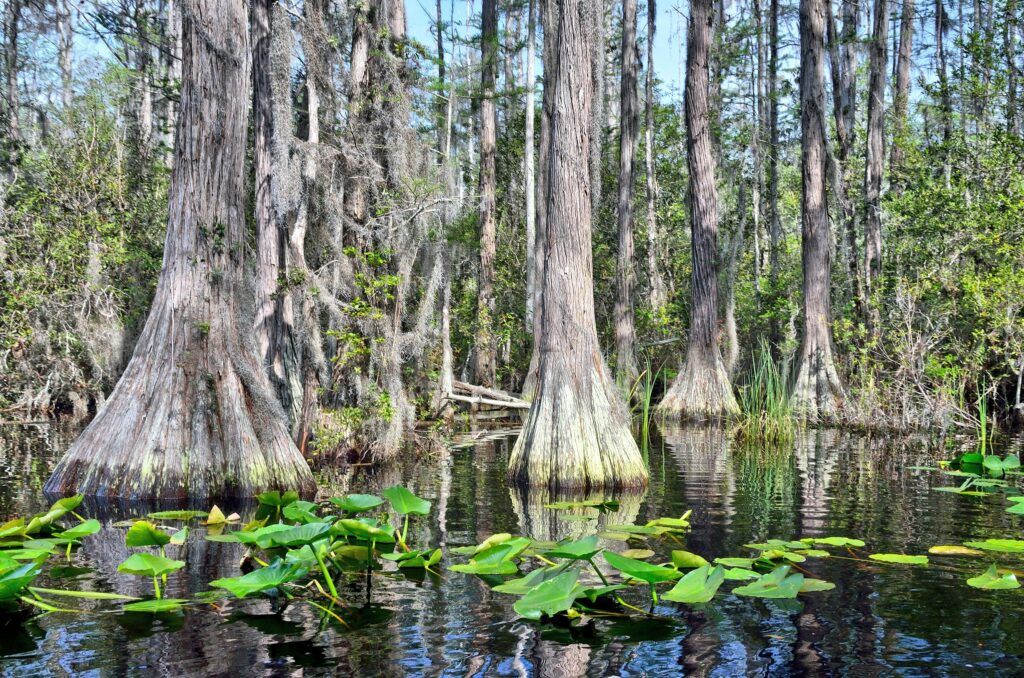
Image from Timothy J
A mix of geological events, environmental variables, and human impact has shaped the character of the Okefenokee Swamp. More than sixty-five million years ago, during the Cretaceous geological period, the region was beneath the sea. Marine sediments produced a deep layer of sandy, nutrient-poor soils. In more recent geologic times the depression forming the basin of the present-day Okefenokee Swamp was presumably created by wave action associated with an offshore sandbar. Today the depression is filled with fresh water and peat to create what Seminoles called the “land of trembling earth.”
In logging operations beginning in 1910 and lasting for a quarter of a century, thousands of cypress, pine, and red bay trees were removed from the swamp. Some were among the largest and oldest individuals of their kind left in the country. In 1937 U.S. president Franklin D. Roosevelt provided official protection from logging and development by establishing the Okefenokee National Wildlife Refuge, which constitutes about 80 percent of the swamp. The absence of roads helps to maintain the integrity of the swamp ecosystem; canoe trails are the primary travel routes through the swamp.
In the subtropical climate, rainfall is approximately fifty inches a year and is the source of most of the water entering the swamp from the more than 1,400 square miles of upland watershed. The clear, tannin-stained, highly acidic waters of the Okefenokee generally are shallow, normally ranging up to depths of less than ten feet and averaging only two feet.
Most (about 85 percent) of the water leaving the Okefenokee is carried by the Suwannee River to the Gulf Coast of Florida. The St. Marys River, which flows into the Atlantic, drains the remainder of the swamp.
Plants
Because of its immensity and its physical and chemical attributes, the Okefenokee Swamp has a blend of habitats that results in a high diversity of environments and mixture of plant species. Grasses, sedges, ferns, and rushes thrive in the drier areas; water lilies, pickerel weed, yellow-eyed grass, and golden club are found in wetter sites. Many kinds of shrubs and trees grow on approximately seventy floating mats of peat known as tree islands. Evergreen shrubs such as fetterbush and dahoon holly are common in some areas.
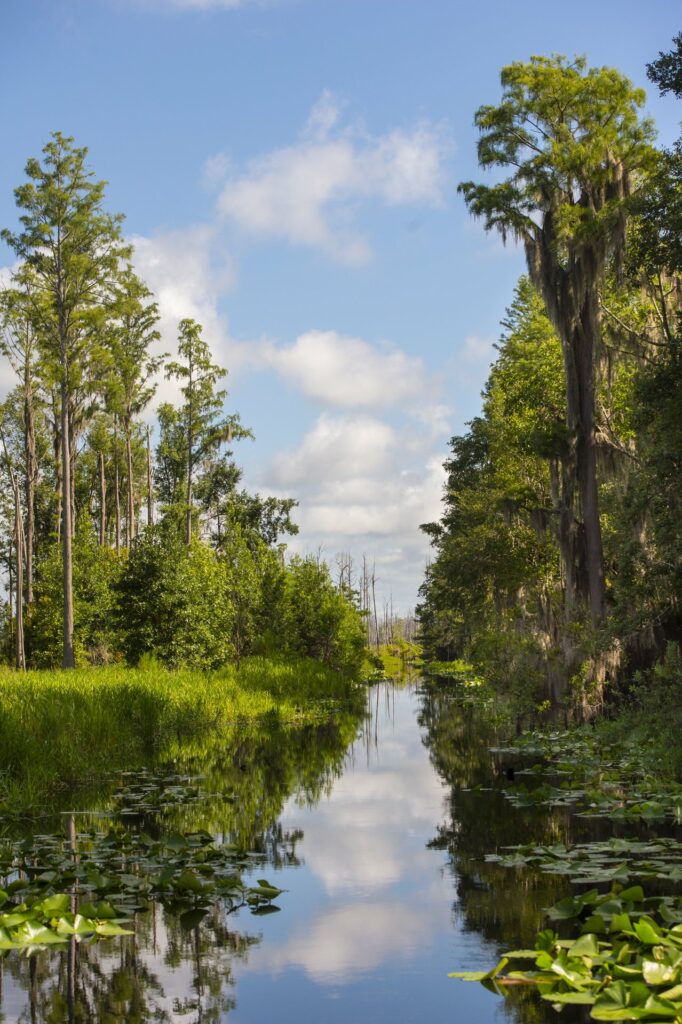
Courtesy of Explore Georgia.
The combination of physical and chemical features also has molded the swamp’s natural history. The low-nutrient and acidic conditions have created ideal habitats for carnivorous plants, which attract, capture, and digest animals to compensate. Several species of large pitcher plants as well as smaller sundews and butterworts, which capture insects with a gluelike surface film on their leaves, are scattered throughout the swamp. Also present are bladderworts, aquatic carnivorous plants with tiny air-filled traps, called bladders, which snap shut when mosquito larvae or zooplankton trip the hair trigger.
Birds and Mammals
Virtually all species of wading birds and waterfowl native to the Southeast can be found in the Okefenokee in some season. Wood storks, blue herons, and white ibises are common sightings. Buffleheads, blue-winged teals, and other ducks are winter visitors. Purple gallinules and least bitterns are more common during the summer. During spring and autumn, many species of migratory birds pass through the swamp en route to or from warmer southern regions. Many species, such as wood ducks and sandhill cranes, inhabit the swamp year round. Collectively, the bird life brings the swamp alive throughout the year with a wide array of sounds and visual displays.
The terrestrial and aquatic portions of the swamp support about thirty species of native mammals. Large terrestrial mammals include black bears, white-tailed deer, and bobcats. Smaller terrestrial carnivores are gray foxes, opossums, and raccoons. Aquatic species include otters, minks, and beavers. Two species of rabbits are associated with the Okefenokee Swamp, the cottontail, inhabiting higher ground, and the marsh rabbit, found in wetter habitats.
Reptiles, Amphibians, and Fish
After birds, reptiles make up the most diverse group of vertebrates. American alligators and five species of venomous snakes are indigenous to the swamp, the most obvious and ecologically dominant being the alligator. The vocal communications of alligators during both day and night, coupled with protective maternal behavior, give these large reptiles a reputation and aura of omnipresence unmatched by any other species of wildlife in the swamp. Among the snakes, the federally protected indigo snake is the largest and also among the least likely to be encountered. The rare, brilliantly colored rainbow snake rivals the color scheme of any bird. Harmless water snakes are the most likely to be spotted in the Okefenokee. Cottonmouths, diamondback rattlesnakes, and canebrake rattlesnakes are the largest venomous species in the swamp. Blue-tailed skinks and green anoles are the most common lizards. Some of the turtles, such as basking cooters, can be obvious in areas where mud turtles, snappers, and softshells may be equally abundant but are hiding in sediments and vegetation beneath the water’s surface.
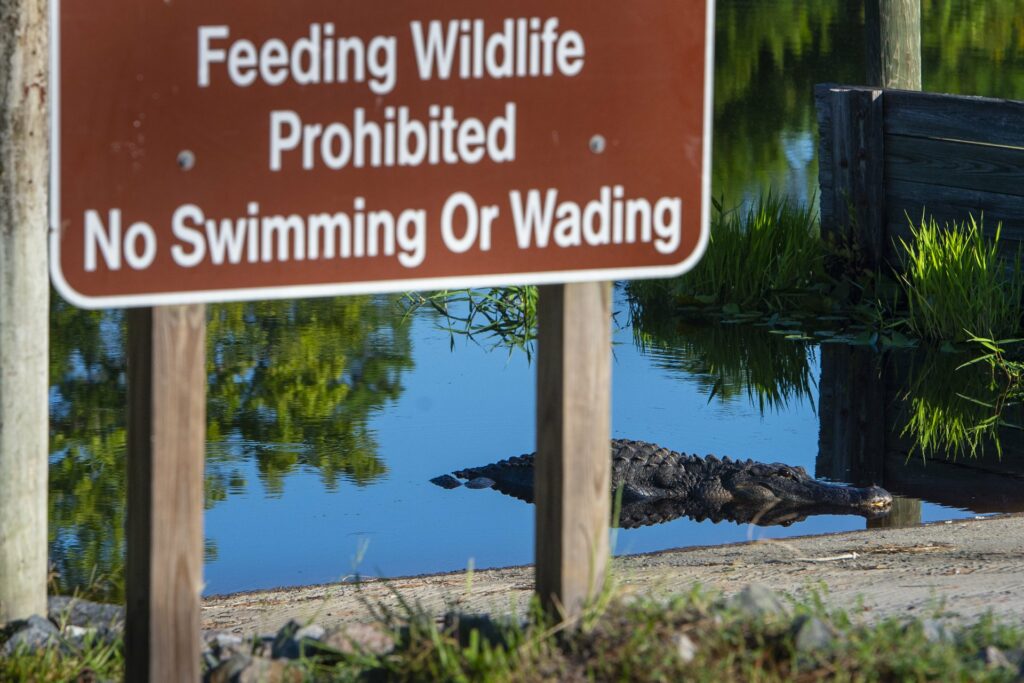
Courtesy of Explore Georgia.
The Okefenokee, with its continual array of wetland habitats, provides ideal situations for egg laying and larval development for three dozen kinds of amphibians. After nightfall, when most birds fall silent, swamp sounds begin anew from the more than twenty species of indigenous frogs and toads. As with birds, the call of each frog species is distinctive. Pig frogs and river frogs are similar in appearance to bullfrogs, which are absent from the swamp. Pig frogs, grunting both day and night, are the dominant vocalizers in most areas. The less common river frogs make a sound like deep snoring. The chuckles of leopard frogs are commonly heard in some areas. Warm rains bring forth southern toads with their trills and narrow-mouthed toads with their sheeplike bleating. Wailing choruses of eastern spadefoot toads can be heard over long distances after heavy rainfalls. A wide variety of tree frogs and their relatives inhabit the Okefenokee Swamp, including green tree frogs and barking tree frogs during the warm months and several species of chorus frogs that give their melodic calls during the winter months. Less obvious amphibians include the salamanders—two are giant salamanders, permanently aquatic creatures that reach lengths of more than three feet.
A diverse assemblage of freshwater fishes, representing fourteen different families, is also known to inhabit the swamp. Among the species are Florida gars, American eels, and Okefenokee pygmy sunfish. Bowfins, pickerel, and several varieties of catfishes are found throughout the swamp’s waterways and standing wetlands.
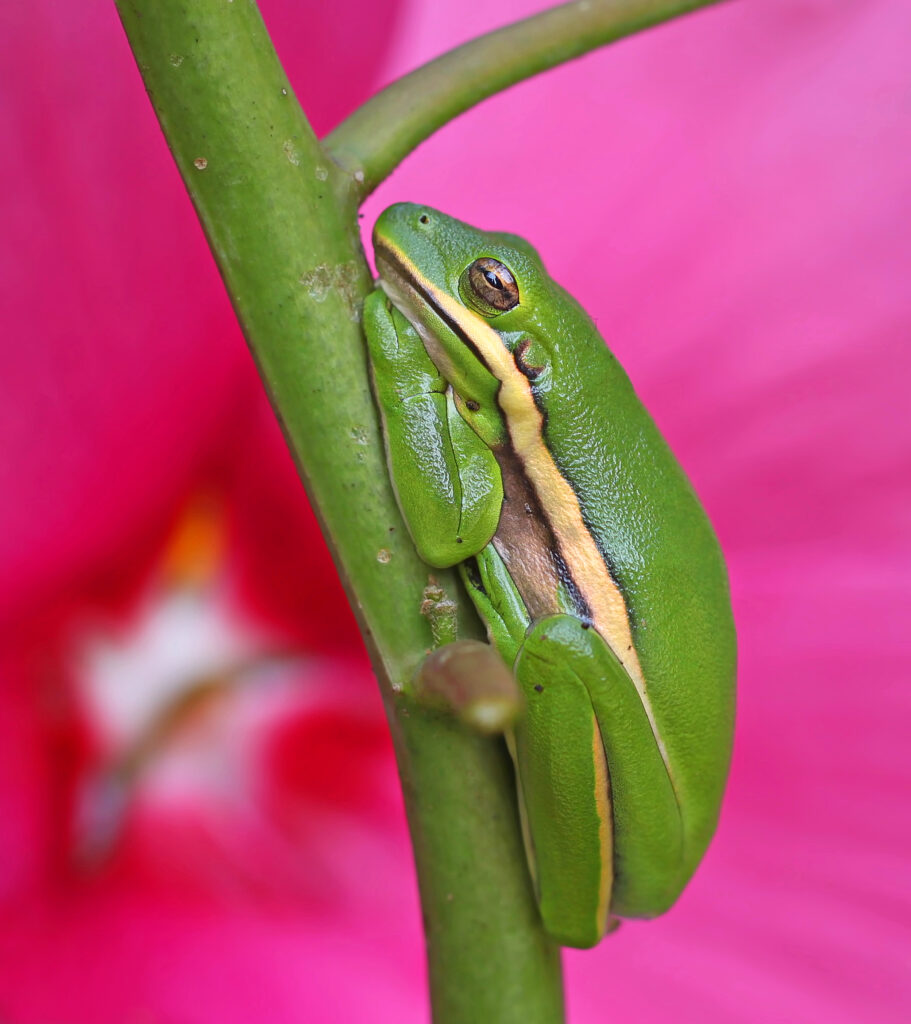
Image from Vicki DeLoach
Although every species of plant or animal in the Okefenokee Swamp also can be found in other regions of the Southeast, the collective biodiversity creates a wildlife array of natural history that is unparalleled. All life forms in the swamp and its surrounding areas have adaptations that permit the existence of high biodiversity living under the singular environmental conditions of the Okefenokee Swamp.


